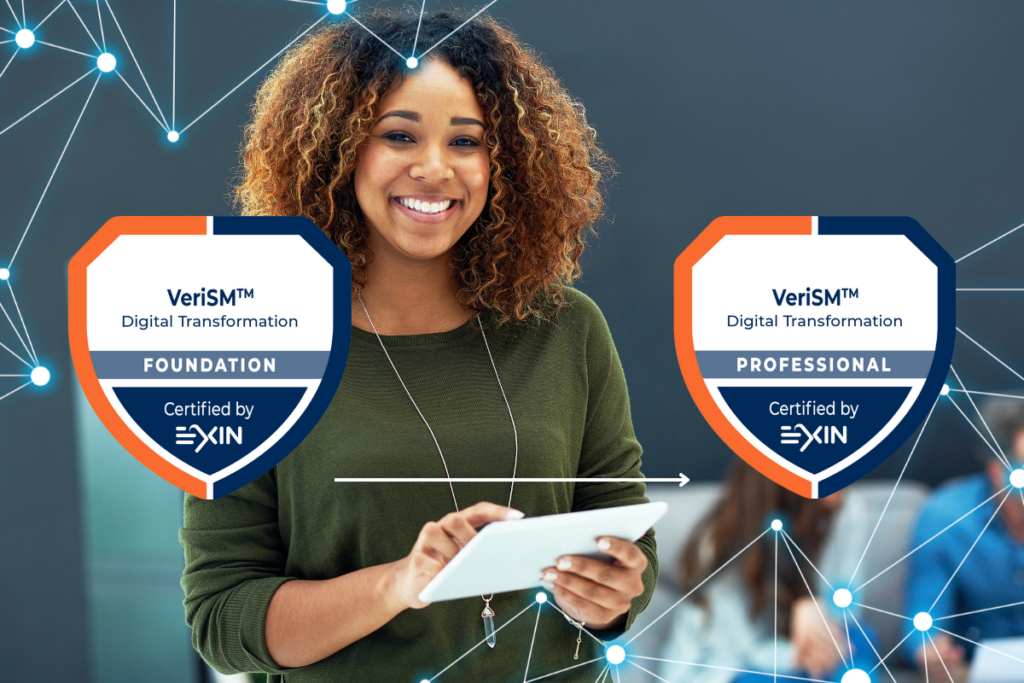Table of Contents
ToggleIn today’s fast-paced digital world, keeping up with the latest trends and best practices in service management is crucial for professionals aiming to enhance their careers. As someone who has navigated this journey, I can attest to the transformative power of obtaining a VeriSM certification. Here’s my personal journey towards success and why you should consider taking the plunge.
Understanding VeriSM
VeriSM (Value-driven, Evolving, Responsive, Integrated Service Management) is a contemporary approach to service management that emphasizes a flexible, business-oriented framework. It integrates various management practices and methodologies, ensuring that service management aligns with the specific needs and goals of an organization.
My Journey Begins
When I first heard about VeriSM, I was intrigued by its promise of a holistic, adaptable approach to service management. As a professional constantly seeking ways to improve and stay relevant, I decided to explore this certification.
The Learning Experience
- Comprehensive Curriculum: The VeriSM certification course offered a thorough understanding of the service management landscape, covering essential topics such as organizational governance, service culture, and the VeriSM model.
- Practical Insights: Unlike some certifications that focus purely on theory, VeriSM provided practical insights and real-world examples, which were immensely helpful in applying the concepts to my daily work.
- Flexible Learning Options: The course offered various learning formats, including online modules and classroom sessions, allowing me to balance my professional commitments with my studies.
Why VeriSM Stands Out
- Adaptability: VeriSM is designed to be flexible, integrating with existing frameworks and methodologies. This adaptability made it easier for me to apply what I learned to my organization’s specific context.
- Value-Driven Approach: The focus on delivering value to customers and stakeholders resonated with my professional ethos, reinforcing the importance of aligning service management with business goals.
- Continuous Improvement: VeriSM emphasizes the need for continuous evolution and responsiveness in service management practices, which is crucial in today’s ever-changing business environment.
The Impact on My Career
- Enhanced Skill Set: The knowledge and skills I gained through the VeriSM certification significantly enhanced my capabilities as a service management professional.
- Career Advancement: With the certification under my belt, I found new opportunities for career advancement, including promotion and the chance to lead critical projects within my organization.
- Professional Network: Joining the VeriSM community connected me with like-minded professionals, opening doors to valuable networking opportunities and industry insights.
Why You Should Consider VeriSM
- Stay Relevant: As service management continues to evolve, VeriSM ensures you stay ahead of the curve with its up-to-date practices and methodologies.
- Holistic Perspective: The certification provides a comprehensive view of service management, making it easier to see the big picture and make informed decisions.
- Career Growth: Whether you’re looking to enhance your current role or explore new opportunities, a VeriSM certification can be a significant asset in your professional toolkit.
Conclusion
Taking the VeriSM certification was a pivotal step in my career, equipping me with the knowledge and skills to excel in the dynamic field of service management. If you’re considering ways to enhance your professional journey, I highly recommend exploring VeriSM. It’s not just a certification; it’s a pathway to success, adaptability, and continuous improvement.
Embark on your VeriSM journey today and unlock new possibilities in your career.
